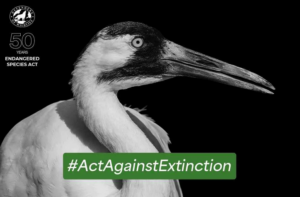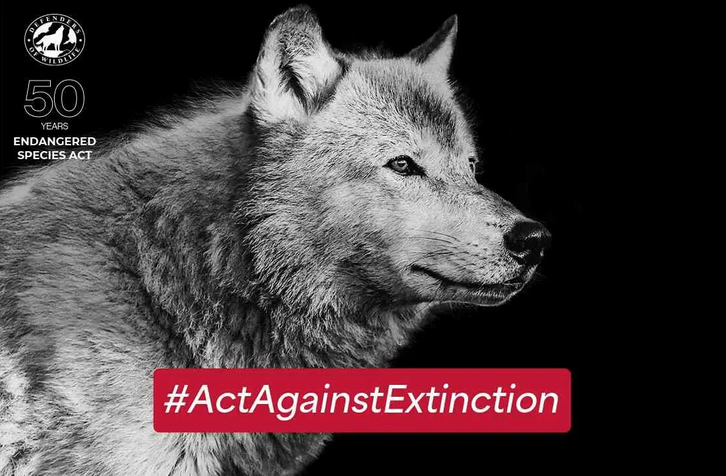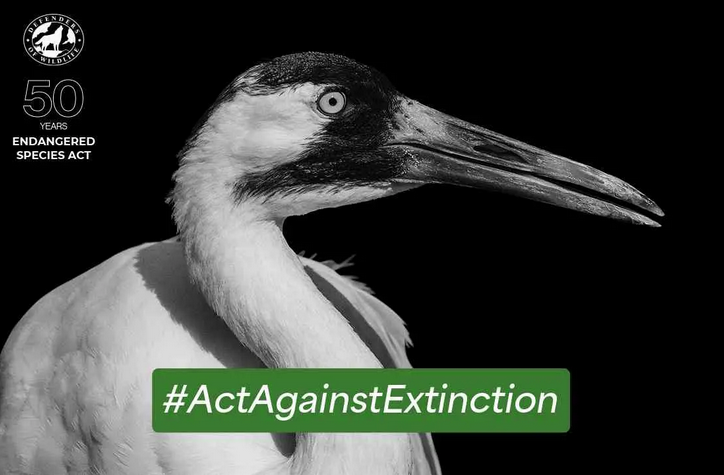This year, the U.S. Endangered Species Act (ESA) turns 50. This landmark law was passed in 1973 and set up a framework to identify, protect and aid the recovery of species threatened with extinction. To date, 54 U.S. species have been delisted from the ESA because they have recovered to the point that they are no longer threatened with extinction. A further 56 species have been downlisted from endangered to threatened, as ESA-related actions have reduced threats upon a species and a significant recovery in their populations. The U.S. Fish and Wildlife Service (FWS) is currently considering another60 species for downlisting due to an increase in their numbers and ranges. The ESA is a unique law. There are many factors that make this law both visionary and highly effective. The law first reduces threats to imperiled species and then sets into action conservation efforts to help the wild population recover. Some of the factors that make the law so effective include:
The ESA is science-based
When a proposal is submitted to list a species under the ESA, or when the Services decide to evaluate a species, a review is conducted using ““the best scientific . . . data available.” Part of the ESA process is to designate and protect certain areas as ““critical habitat”” for most species that are listed (specific areas with the physical and biological features essential for the species’ conservation) – again, using science to assess and designate this habitat. Crucially, the law dictates that listing decisions must rely on science alone. The science-driven approach to listing, protecting and aiding the recovery of species and their habitats is an essential factor in the Act’s success and the rigorousness by which decisions are typically made. Unfortunately, there are frequent attempts made in Congress to redefine what is meant by “the best scientific . . . data available” and to weaken the scientific rigor of the process, as well as political pressure on agency staff to avoid listing decisions that are thought to adversely impact some industrial processes.
The ESA was written by an expert
Many of the ESA’s strongest substantive provisions were written largely by Dr. Lee Talbot, a visionary ecologist and experienced conservation scientist. Lee’s research helped with the creation of the Serengeti National Park, the Masai Mara National Reserve, and many more protected areas. He also ran the Office of Ecology for the Smithsonian Institution’s National Museum of Natural History before going on to serve as Senior Scientist and Director of International Affairs for the Council of Environmental Quality (CEQ) under President Nixon. During his tenure in the CEQ, he helped write the ESA and took the lead in writing several other environmental laws and treaties. Dr. Talbot’s scientific knowledge and practical “boots on the ground” conservation experience played a vital role in drafting this groundbreaking law. Dr. Talbot also served as a science advisor to Defenders of Wildlife and sat on the organization’s Board of Directors for many years.
The ESA was strongly bipartisan
On February 8, 1972, republican President Richard Nixon called on Congress to pass “a stronger law to protect endangered species of wildlife”. The bill that became the ESA was unanimously approved in the U.S. Senate. In the U.S. House of Representatives, the first draft of the bill was approved with 390 votes and just 12 against it. After a joint conference committee was convened to reconcile the Senate and House versions of the bill, the Senate again voted unanimously for the revised bill, and the House voted 355 in support and just 4 against the bill. President Nixon signed the ESA into law on December 28, 1973.
The ESA has been a success
Many species have been saved from extinction thanks to the ESA. There are many high-profile success stories where species have been brought back from the brink — such as the southern sea otter, the California condor, the brown pelican, the humpback whale, the piping plover, the American alligator, the peregrine falcon, the green sea turtle and even the symbol of America: the bald eagle. Critics of the ESA often focus on the low percentage of species that have been delisted – but Rome wasn’t built in a day!
However, more than 95 percent of species listed under the Act are still with us today, whereas if they had not been listed, many could already be extinct. Many of the species listed on the ESA are slow-breeding mammals and recovering from near extinction to a stable population can take decades, especially given that many of the threats facing these species have continued or worsened. These critics include many of the same policymakers that have tried to hamstring the ESA by denying funding to enforce the law or to implement recovery plans.
It ensures that government activities don’t imperil listed species
The U.S. government is a major landowner and a major funder of and permitting authority for construction and development in the U.S. Section 7 of the ESA requires that agencies consult with the FWS to ensure activities the government funds, conducts or authorizes do not jeopardize the existence of, or adversely modify the critical habitat of, threatened and endangered wildlife. Critics often claim that these consultations lead to development being canceled and jobs being lost. However, researchers at Defenders found that out of nearly 90,000 FWS Section 7 consultations (between 2008 and 2015), no projects were stopped or extensively altered. They concluded that federal agencies have learned to design projects with minimal impacts on endangered species and that they’ve been able to work through potential conflicts and make suitable adjustments to proposals. Unfortunately, there have been many attempts to change the law to exclude various government activities from Schedule 7 consultations, especially in recent years.
The ESA was visionary
The ESA is a truly visionary law and has become a model and inspiration for endangered species protection in other nations. Many provisions in the ESA were especially prescient, particularly its recognition of the importance of protecting habitats as well as the species they contain and the best available science mandate, which in the years since has become a component of numerous other laws and treaties. The ESA still works because when it passed, the ESA was far ahead of its time: it was a law for the 21st century written in the 1970s. It is a law that is widely supported among the American public, with a majority of Americans from all ideological backgrounds supporting it. It’s also a law that is a central weapon in the United States’ fight against the biodiversity crisis.




